
History of Junagadh
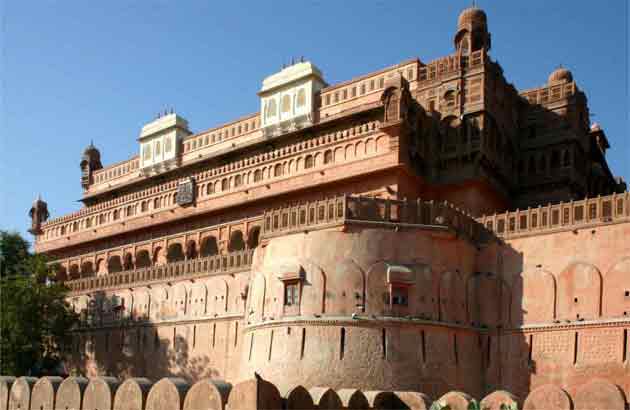
History of Junagadh
The history of junagadh is chequered by the rules of the Mauryans, Kshatrapas, Guptas, Vilabhis, Chudasamas, Gujarat Sultans and Babi Nawabs. Junagadh, at different times in history, was under the influence of four major religions. Hindu, Bhuddhist, Jain and Muslim. Both political powers and religious influences enriched the culture and created edifices leaving their mark on the architecture of Junagadh.
Junagadh was the capital of the Junagadh State under the Muslim rulers of Babi Nawabs. In Gujarati, `Junagadh' literally means an ancient fort. The junagadh town is located at the foothills the sacred hill of Girnar and occupies a special place in the history of Gujarat.
There are two fortifications: the fort walls surrounding the town and Uparkot in the west. Uparkot, an ancient citadel located on the higher level of the town, was a stronghold of Mauryans and Gupta Empire and is said tp have survived 16 sieges in the last 1000 years due to its strategic location and difficult access. The entrance of Uparkot has a fine specimen of Hindu Toran, leading to flat land dotted with archological sites. The major sites are Buddhist caves, Baba Pyara caves (2nd century), Adi-Kadi Vav, Navghan Kuvo and Jami Masjid. The Buddhist caves are fine examples of rock cut architecture with ornamented pillars, carved entrances, water cisterns, chaitya hall, monastic cells for meditation and chaitya windows. The Khapara-Kodia caves located in the town are also worth visiting.
Adi-kadi Vav and Navghan Kuvo were built by the Chudasama Rajputs and are unique water structures among the numerous step wells of Gujarat. Both these served as sourcesf during teh sieges lasting for years and were essential parts oft he basic need of the hill fort. The Adi-Kadi Vav(15th century) has a long flight of 120 steps leading to water, while the Navghan Kuvo (1260AD) is hewn from soft rock and is 52 meter deep, reached by a circular staircase winding around the shaft. Jami Mosque was originally a palace of Ranakdevi, converted into a mosque by Muhammad begada to commemorate his victory over Junagadh in 1470 AD. Another interesting artefact from past is `Nilam' canon, brought to Diu from Egypt to fight against the Prortuguese and it was manufactured by the order of Suleyman, the Magnificent, King of Turkey.
The Babi rulers of Junagadh, Nawab Mahobat Khat II (1851-82 AD)undertook the beatification of Junagadh and patronized the construction of several building and urban design projects like Aina Mahal, Circle Chowk with clock tower and Dewan Chowk. Other important buildings of the Nawabi period are Bahauddin College, Manoranjan Guest House, Mahobat Madresa (Narsi Vidya Mandir). The most interesting structures are the maqbaras (musoleums) of the Royal Family. The group of maqbaras represent the creative and eclectic phase of Nawabi architecture of Junagadh (1878-1911 AD). All the architectural elements are phase of Nawabi architecture of Junagadh (1878-1911 AD). All the architectural elements are highly decorative and remind one, of the last phase of architecture of Lucknow.
The 14 rock edicts (257-56 BC) of the great Emperor Ashoka, inscribed on a huge stone in Pali script, inscrption by King Rudradaman (150 AD) and Skandagupta (456 AD) are the proof of importance of Junagadh from ancient times. The city was home to one of the great poets of India, Narsinh Mehta (15th century). He was an ardent devotee of Lord Krishna, a scholar, philosopher and a social reformer. The `Narsinha Mehta no Choro' near Najewadi Gate was a platform for his religious discouses and Bhajans. Other places to be visited are the Sakkarbag Zoo, Welingodn Dam, Damodar Kund, Bhavnath Temple, city Rajmahal and Darbar Hall Museum. Girnar is a sacred hill with five peaks visited by millions of Hindus and Jains. The Mahashivratri fair held here is attended by naga sadhus and pilgrims from all over India.
Uparkot
The oldest part of Junagadh, and the center of any visit to the city, is the upper citadel, known as Uparkot. Over 2300 years old, with walls up to 20 m high in some places, Uparkot is what allowed Junagadh to withstand a 12-year siege at one point. It is believed that these caves belong to 1st-4th Century AD and are gilded with beautiful pillars and entrances, water cisterns, horseshoe shaped chatiya windows, an assembly hall and cell for meditation.
There is also a 300 ft.-deep moat inside the walls, that reportedly used to be inhabited by crocodiles, so that if any attacker managed to surmount the high fortifications, they would then either be exposed on the upper battlements or fall into the crocodile-infested trench. ust inside the entrance are the insignia of some of Uparkot’s former rulers and temples to Ganesh, Hanuman and Shakti. Closeby are two medieval cannons named Neelam and Manek, forged in Cairo and brought by the Turks who sailed to Saurashtra to aid in defending Diu against the Portuguese.
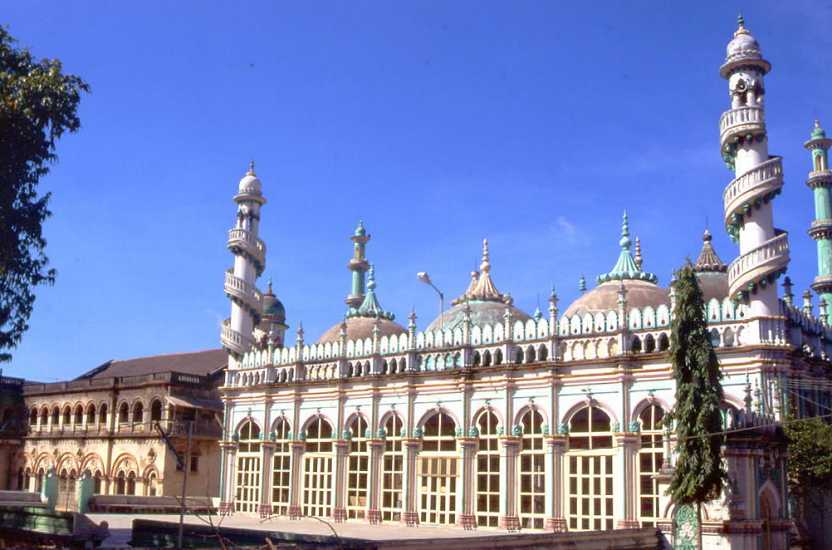
Jama Masjid
The Jama Masjid was originally the palace of Ranakdevi, but was converted to a mosque by Sultan Muhammad Begda when he conquered the princes of Saurashtra. Perhaps for that reason, it is easily mistaken for a fort. It also has a covered courtyard, which is very unusual in Indian mosques.
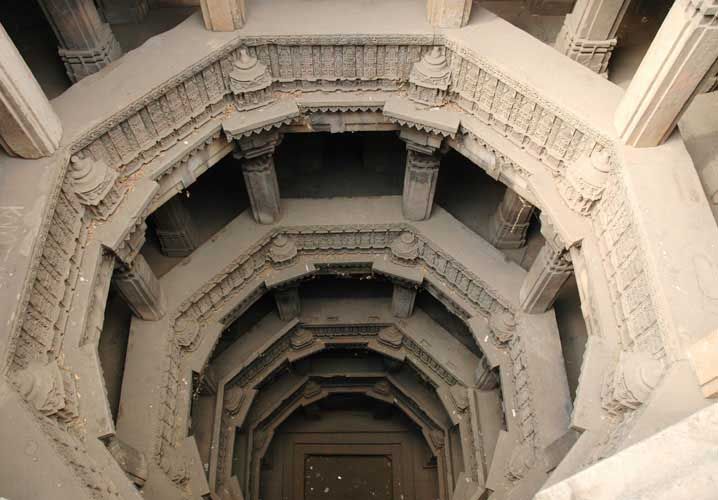
Adi-Kadi Vav and Navghan Kuwo
These two stepwells inside Uparkot, are highly unusual forms of stepwells, very different from wells in other parts of Gujarat. Most wells are dug through various kinds of subsoils and rock layers, and stone columns, floors, stairs and walls are built much like they would be in above-ground construction. In the case of these two, the spaces of the well itself were carved out of stone, leaving the structure of the well (the columns, the walls, etc.) out of the original rock.
This means no structural construction is done, so the whole structure of the well is hewn out of a single stone.Navghan Kuwo, just a few years shy of being a thousand years old (it was apparently built in 1026 AD, though some accounts say it is much older), is partly hewn out of soft rock and partly built up structurally like other wells. The stairs that lead down 52 m (170 ft.) to the water level spiral around the well shaft itself, which is also very uncommon. The water from Navghan Kuwo is what allowed Uparkot to withstand many long sieges.
Adi-kadi Vav, built in the 15th century, is carved entirely out of hard rock. A narrow flight of 120 stairs cuts down through the stone to meet the well shaft deep in the stone. Two different legends claim to explain the name of the well. One says that the king ordered a stepwell to be built and workers excavated down into this hard stone, but no water was found. The royal priest said that water would only be found if two unmarried girls were sacrificed. Adi and Kadi were the unlucky ones chosen for this and after their sacrifice, water was found. The other story, less fantastic but probably more likely, claims that Adi and Kadi were the names of the royal servant girls who fetched water from the well every day. Either way, people still hang cloth and bangles on a tree nearby in their memory.
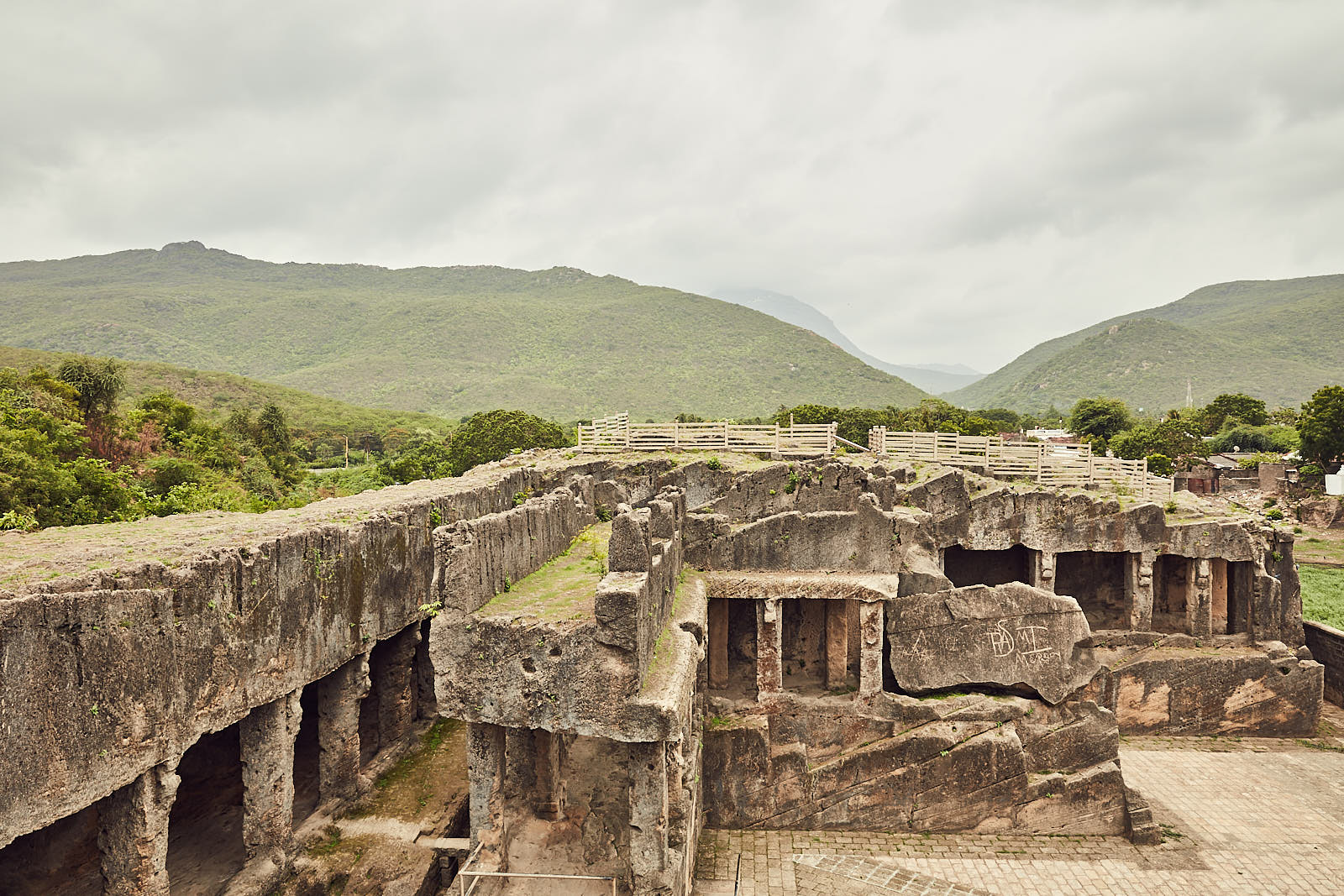
Khapra Kodia Buddhist Caves
The so-called “Buddhist Caves” around Uparkot are not actually caves, but three separate sites of rooms carved out of stone to be used as monks’ quarters, hence the name. They are all a little over 2000 years old, give or take a couple of centuries. The oldest, the Khapara Kodia caves caves belong to 3rd-4th century AD and are plainest of all cave groups. These caves are along the edge of the ancient Sudarshan Lake (which no longer exists) and the northern side of Uparkot. The chambers are separated into an east- west longitudinal crest. The rectangle western wing and the ‘L’ shaped wing used by the Monks as a monsoon shelter, are the important parts of the caves. They were carved into living rock during the reign of Emperor Ashoka and are considered the earliest monastic settlement in the area. After many years of use, they were abandoned because cracks above them allowed water to seep into living quarters, rendering them unusable. Many accounts say that after this, the monks left for Maharashtra, where they went on to carve many similar and more elaborate structures. Khapara Kodia was damaged by later quarrying, and now only the highest story remains.
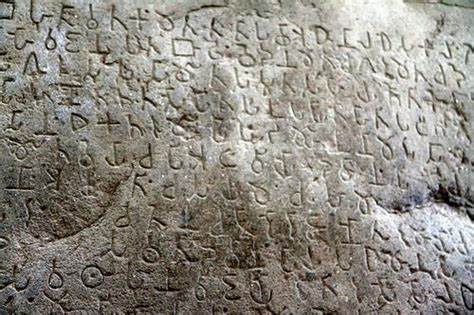
The Rock Edicts of Ashoka
Ashoka’s Rock Edicts belong to 250 BC where around 14 edicts of Ashoka are located on the route to the Mount Girnar Hills. This rock edict is a huge stone and the carving in Brahmi script in Pali language mention the resistance to greed and animal sacrifice and also moralize the principles of purity of thought, secularism in thinking, kindness and gratitude. The other major part of Junagadh’s Buddhist heritage are the stone edicts of Emperor Ashoka, found on the road towards Mt. Girnar. When Ashoka famously converted to Buddhism and renounced violence, on his way to being one of India’s most revered and respected rulers of all time, he had edicts carved in stone and placed in sites all across India (ranging as far as Kandahar in present-day Afghanistan in the West, modern Bangladesh in the East, Andhra Pradesh in the south) with precepts for living a virtuous life, respecting others and creating a just society. Speaking in moral and ethical terms, not religious ones (though the Buddha is mentioned), the edicts reach out across faith traditions. Tellingly, in Junagadh one edict that is visible (though you won’t understand it unless you read Pali) reads: “To foster one’s own sect, depreciating the others out of affection for one’s own, to exalt its merit, is to do the worst harm to one’s own sect.” This is wise counsel calling to us from 2300 years ago. The site of the edicts is open every day from 8am-6pm. Entry is Rs.5/- for Indians & Rs.100/- for Foreigners.
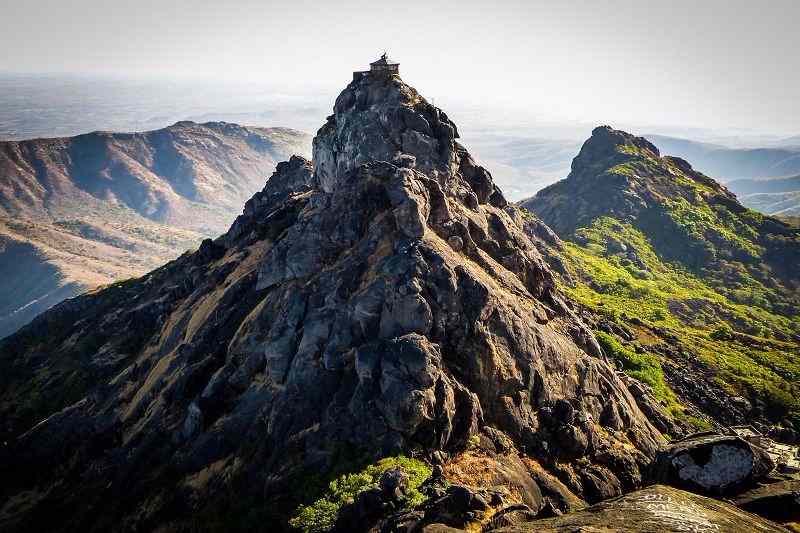
Girnar
The highest point in Gujarat, Mt. Girnar has for centuries been one of the most important pilgrimage sites in the state and indeed in all of Western India, with 866 Hindu and Jain temples spread over the 5 summits. The base of the mountain, known as Girnar Taleti, is just 4 km east of the center of Junagadh. A hike up the mountain is best started early in the morning, with the mind of a pilgrim. Each step upward should itself encompass the entirety of the journey, rather than be seen as another effort towards one’s goal of reaching the top. Though people will offer to carry you up the stairs (for a hefty price), the real experience of Girnar is to be found in walking. Pilgrimage is not about arriving, but about traveling. Start early in the morning, carry plenty of water, and stop for rest often during the hot hours of the day, and your climb of Mt. Girnar will be fruitful.
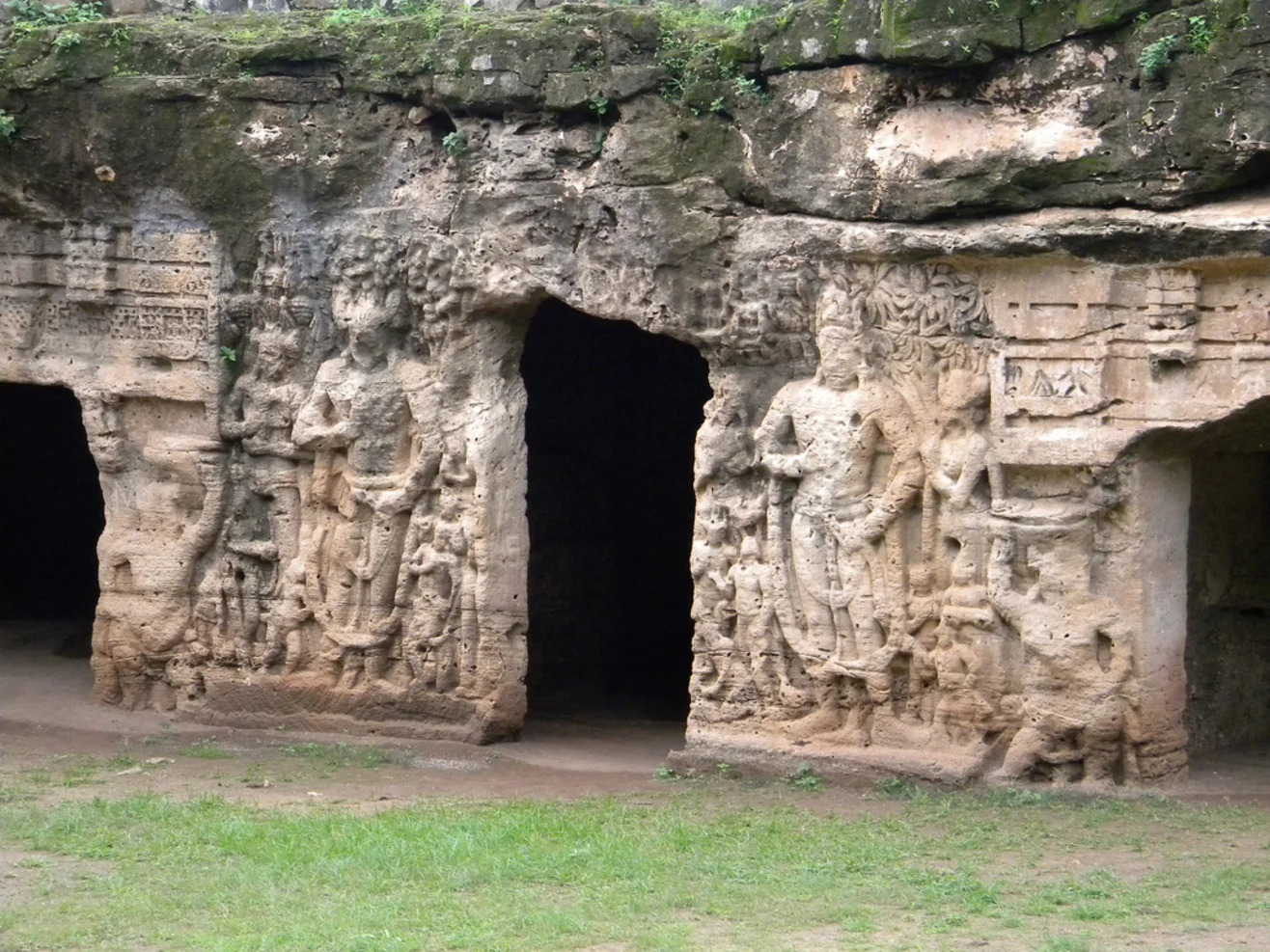
Junagadh Caves
Khapra Kodia Cave, Junagadh On the basis of scribbles and short cursive letters on the wall, Khapra Kodia caves are datable to 3rd-4th century AD. This is the plainest of all cave groups. The chambers are cut into an east-west longitudinal ridge. The important components of the caves are the oblong western wing and the 'L' shaped wing used by Monks as a monsoon shelter.
Satguru Rohidass Ashram
Satguru Rohidass Ashram situated at Sarsai Village of District Junagadh of Gujarat. It is believed that Satguru Ravidass ji has spent approximately 15 years of his life at Sarsai Village of District Junagadh of Gujarat and become famous with name Satguru Rohidass Ji. Satguru Rohidass Ashram at Sarsai Village of District Junagarh is a great place of worship for Satguru Rohidass followers. A very old temple of Satguru Ravidass (Rohidass) Ji is also here in this Ashram. In front of this temple a Yagya Hawan Kund is also present; which has an historic value. According to the old folks of Sarsai; few decades ago, there were 7 Kunds (Pool) related with Satguru Ravidass Ji. But, now only 3 Kunds are left. Satguru Ravidass Ji taught the lessons of universal brotherhood, tolerance, message of love your neighbour, which has got more importance in today's world.
Excursions in Junagadh
Gir National Park (the only home of Asiatic Lions)60 km, Prabhas patan-Somnath (one of eh twelve most sacred Shiva Shrines)79km, Chorwad (a delightful resort on the beach) 72 km.
How to Reach to Junagadh
By Air
The nearest airport to Junagadh is at Keshod (40 km) and at Porbandar (113 km).
By Rail
The Junagadh Railway Station is well-connected to all the major cities in India.
By Road
Ahmedabad (336 km), Rajkot (110 km), Jetpur (36 km)




Post ReviewPraising pain was born give you a complete.